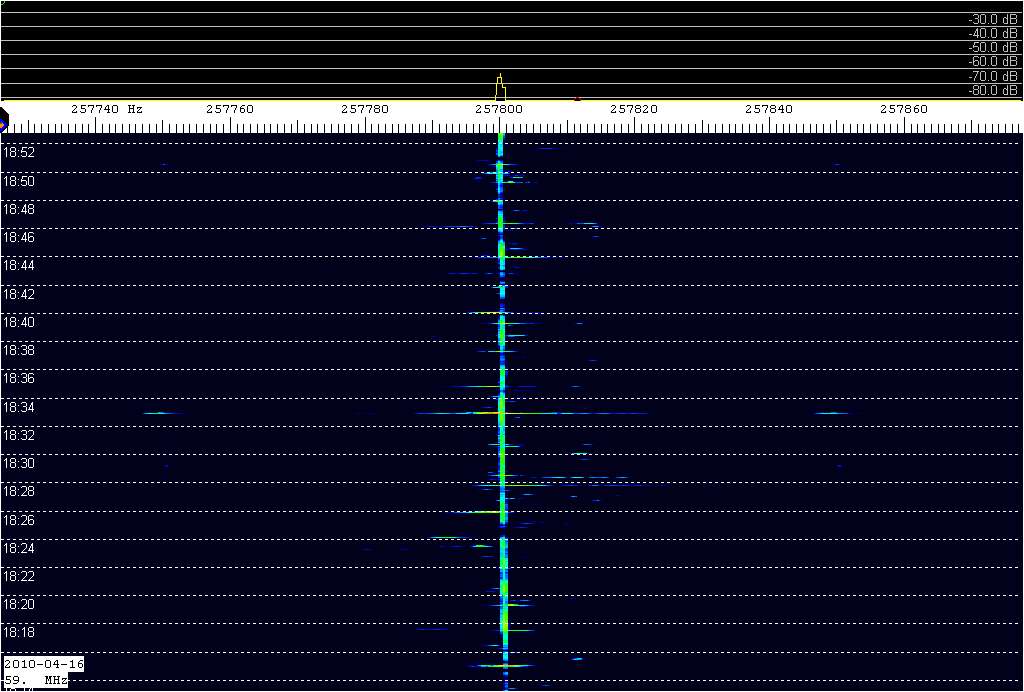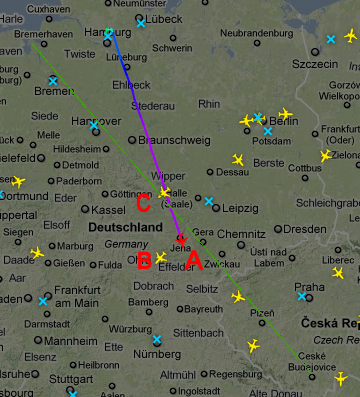Airplane Scatter (AS) is monitored here all the time on the FM and TV bands. Signals from the transmitter get reflected at airplanes that fly midway between me and transmitter site. On FM signals arrive here from far away as 700km, in my case Wendelstein in the German Alps or a bit closer Plzen CZE (550km). Typically more than one plane is involved, that results in a cyclic up / down fading that slowly becomes faster or slower, because the reflected signal from each plane beats with the others.
Listen to this clip of 89,1 MHz CRo1 Plzen (550km) recorded in Feb when no tropo was present. It starts with a weak signal having a higher beating frequency (sounds like fast fading) that then cycles slower and slower while the signal becomes stronger. At the peak the beating is not heard since the receiver is quieting, but the s-meter would show large swings. After the maximum the level becomes weaker and the beating (=fading) frequency slowly increases again until the signal becomes inaudible.
Why does it beat? The second waterfall below explains it nicely, see how each reflection adds to the total sum of the receiving signal arriving at my antenna, and their Doppler shifted frequencies superimpose each other. As they get closer and closer, the "fading" cycles become slower.
In April 2010 all planes were grounded for several days due to the arriving ash clouds of the Icelandic volcano. A unique opportunity to check what could be heard when AS is absent.
The usual signals from Wendelstein and Plzen were gone, only the sea path to Tacolneston UK (500 km) made the FM signals audible but now with very slow fading. Also Lille (490 km) still came in quite weak.
From the south the carrier of TV channel R2 Ceske Budejovice (670 km) arrived. It is overlaid by Meteor Scatter shown as short horizontal lines in this waterfall.

On normal days when the airspace is crowded with planes the waterfall shows many reflections. All reflections can add up and increase the resulting receive signal so that video can be seen, this happened briefly in the area where the traces turn red. Note that on this day the direct carrier didn't arrive, everything came via AS.

It would be interesting to figure out the location of the planes causing the reflections. Normally it is impossible since the airspace is pretty congested. On 19-April-2010 very few planes were allowed to fly so I used that opportunity to check it out. I watched the waterfall and simultaneously monitored the live air traffic
At 20:59 trace A appeared getting stronger with slowly decreasing frequency. At 21:06 trace B started but with faster decreasing frequency, at 21:11 yet another one (C).
Now scroll down to see the flight map

